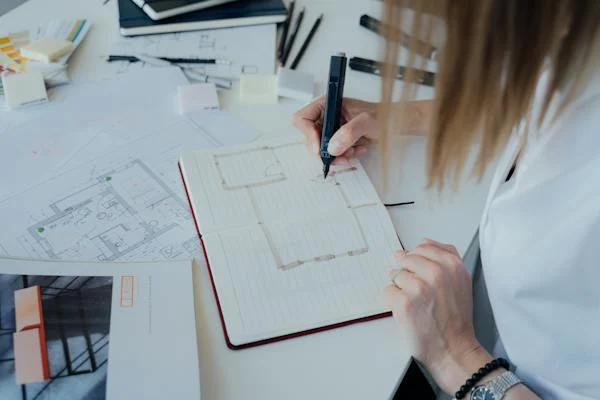Energy efficiency and innovation are intertwined concepts shaping the future of corporate design and architecture. Energy efficiency refers to the optimization of energy usage to achieve desired outcomes while minimizing waste and consumption. Innovation, in this context, encompasses cutting-edge technologies, materials, and design strategies that enhance energy performance and resource conservation. These concepts are critical for sustainability as they reduce environmental impact, promote responsible resource usage, and contribute to a cleaner future. Furthermore, energy efficiency translates directly into cost reductions. By lowering operational expenses through lowered energy bills, businesses unlock valuable financial resources that can be reinvested toward growth. Industries such as manufacturing, healthcare, and data centers, with their high energy demands, see particularly significant advantages from implementing energy-efficient design and innovative solutions.
Sustainable Infrastructure: Innovative Energy Solutions in Civil Engineering
To showcase the real-world impact of sustainable energy practices, let’s examine a company operating in the civil and site engineering sector. This industry, with its focus on infrastructure development and land management, has significant opportunities to implement innovative solutions that minimize environmental impact. Civil and site engineering firms often face challenges in balancing development needs with responsible energy use. Projects may require extensive land clearing, heavy machinery operation, and the use of energy-intensive materials. A leading firm in this field demonstrates a commitment to sustainability by prioritizing energy-efficient designs, exploring renewable energy sources to power operations, and actively seeking ways to reduce waste throughout project lifecycles. They might, for instance, utilize solar-powered construction equipment, incorporate green infrastructure solutions on-site, or carefully manage transportation logistics to minimize fuel consumption.
Navigating Change: How to Overcome Resistance to Energy-Smart Solutions
While the benefits of energy-efficient designs are undeniable, companies often encounter hurdles in the process of implementation. One significant challenge lies in the perceived high upfront costs associated with implementing new technologies or retrofitting existing infrastructure. The integration of geomatics engineering services ensures that projects deliver quantifiable environmental improvements. While investments in energy efficiency yield long-term savings, these initial expenses can understandably deter businesses, especially those with limited budgets. Additionally, the integration of innovative energy solutions often necessitates adaptations to existing systems or operational processes. These transitions can involve compatibility issues, requiring additional resources and expertise to ensure a smooth rollout.
Furthermore, stakeholder resistance can sometimes pose an obstacle. Employees or decision-makers might be hesitant to embrace change or disrupt established workflows, especially if they do not fully understand the benefits of energy efficiency initiatives. To address these challenges, a multifaceted strategy is often necessary. Government incentives, tax breaks, and financing programs can help mitigate the upfront costs of energy-efficient upgrades. These financial resources make a compelling case for businesses seeking a return on their investment. When dealing with technology integration, partnering with experienced consultants or contractors specializing in energy optimization is crucial in ensuring compatibility and minimizing disruptions.
Open communication and education are paramount to overcoming stakeholder resistance. Transparently demonstrating the long-term cost savings, environmental benefits, and potential reputational gains of energy-efficient practices can encourage wider support and foster a culture of sustainability within the organization. Success stories and case studies from similar businesses can provide tangible evidence of the positive impact that these initiatives can have, further strengthening the case for change.
Sustainability in Action: How Industry Leaders Are Reducing Their Footprint
The adoption of energy-efficient and innovative designs extends far beyond individual businesses. As pioneers like barge design solutions Knoxville TN, champion these practices, they set a benchmark for their industry, encouraging wider adoption of sustainable solutions. Reduced energy consumption translates directly into a smaller environmental footprint. Energy-efficient practices minimize reliance on fossil fuels and lessen greenhouse gas emissions. Additionally, the demand for innovative energy solutions drives further research and development in the sector, fostering a market shift toward renewable technologies and green infrastructure. As these principles become deeply ingrained in industry standards, their collective impact contributes significantly to global efforts for a more sustainable future.
Adaptability is Key: How Businesses Can Thrive in a Sustainable Future
In summary, the integration of energy efficiency and innovative solutions into corporate design is no longer optional but essential. Leading companies recognize that sustainability and business success are intrinsically linked. By optimizing energy usage, reducing their environmental impact, and investing in cutting-edge technologies, businesses gain a competitive edge, unlock cost savings, and enhance their reputations. However, this is an ongoing journey. The field of sustainable design is marked by continuous innovation and progress. Companies must stay informed about the latest advancements and be willing to adapt their practices to remain at the forefront of sustainability with the help of Barge Waggoner Sumner & Cannon. The future of design in business is one where energy efficiency and environmental responsibility are not afterthoughts but core drivers of decision-making, ultimately shaping a future marked by responsible growth and a cleaner, healthier planet.

